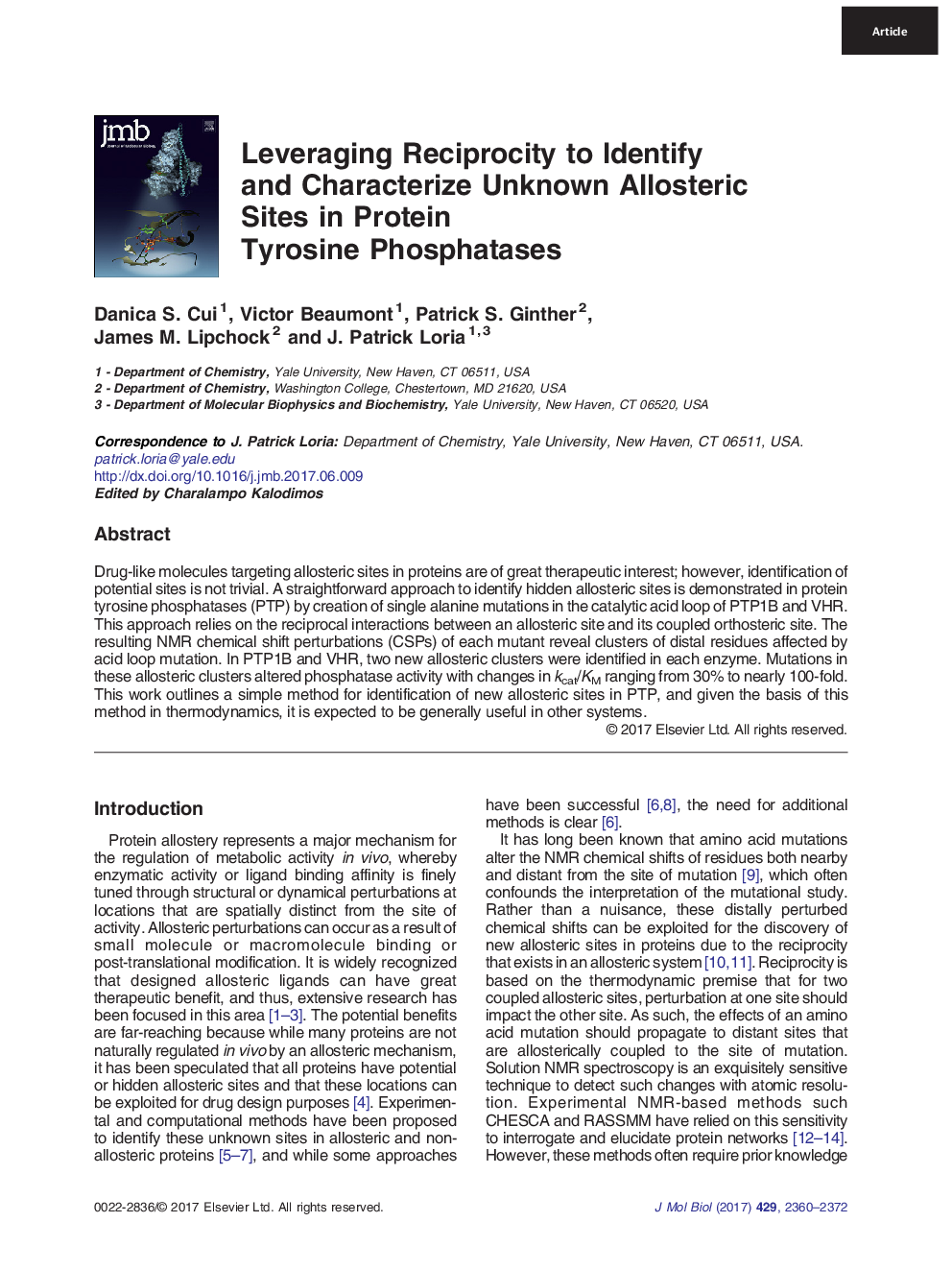| Article ID | Journal | Published Year | Pages | File Type |
|---|---|---|---|---|
| 5533043 | Journal of Molecular Biology | 2017 | 13 Pages |
â¢Hidden allosteric networks can be identified by examining the protein-wide 1H,15N CSPs of active site mutations.â¢Frequency analysis of CSP of alanine mutations in the catalytic acid loop identified five clusters of distal residues in PTP1B and two in VHR that are affected by active site perturbations.â¢Mutations in these distal clusters are shown to affect the catalytic efficiency and loop conformations of the phosphatases in study.
Drug-like molecules targeting allosteric sites in proteins are of great therapeutic interest; however, identification of potential sites is not trivial. A straightforward approach to identify hidden allosteric sites is demonstrated in protein tyrosine phosphatases (PTP) by creation of single alanine mutations in the catalytic acid loop of PTP1B and VHR. This approach relies on the reciprocal interactions between an allosteric site and its coupled orthosteric site. The resulting NMR chemical shift perturbations (CSPs) of each mutant reveal clusters of distal residues affected by acid loop mutation. In PTP1B and VHR, two new allosteric clusters were identified in each enzyme. Mutations in these allosteric clusters altered phosphatase activity with changes in kcat/KM ranging from 30% to nearly 100-fold. This work outlines a simple method for identification of new allosteric sites in PTP, and given the basis of this method in thermodynamics, it is expected to be generally useful in other systems.
Graphical AbstractDownload high-res image (101KB)Download full-size image
